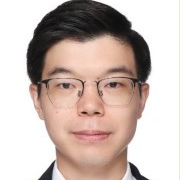AI-Based Image Processing
A special issue of Applied Sciences (ISSN 2076-3417). This special issue belongs to the section "Computing and Artificial Intelligence".
Deadline for manuscript submissions: closed (30 April 2023) | Viewed by 97034
Special Issue Editors
Interests: artificial intelligence; Internet of Things; robots
Interests: maglev trains; offshore cranes; quay cranes and nonlinear control with applications to mechatronic systems
Special Issues, Collections and Topics in MDPI journals
Interests: GAN-based facial editing; deep cloth animation; deep portrait editing; special effects simulation for motion picture; cloth animation and virtual try-on; traffic simulation and autonomous driving; crowd and group animation; implicit surface modeling and applications; creative modeling; sketch-based modeling; physically-based animation; image processing
Special Issue Information
Dear Colleagues,
With the rapid development of artificial intelligence, a series of artificial intelligence algorithms have been proposed, and intelligent applications have started to play an increasingly important role in industrial production and our social lives. The intersections of AI in medical image processing, image processing for intelligent transportation systems, satellite image processing, face recognition, object recognition, etc. are still challenging.
Therefore, a Special Issue on “AI-based Image Processing”, focusing on tackling the most pressing problems faced by the world is organized, and more specifically, in the topics specified below:
- Image processing algorithms;
- Image analytics;
- Medial image processing;
- Biomedical image analysis;
- Image generation;
- Image restoration and enhancement;
- Image compression;
- Edge detection;
- Image segmentation;
- Semantic segmentation;
- Image classification;
- Image inpainting;
- Image captioning;
- Feature detection and extraction;
- Content-based image retrieval;
- Optical character recognition;
- Face recognition;
- Emotion recognition;
- Gesture recognition;
- Object recognition and tracking.
Prof. Dr. Xinwei Yao
Dr. Yougang Sun
Prof. Dr. Xiaogang Jin
Guest Editors
Manuscript Submission Information
Manuscripts should be submitted online at www.mdpi.com by registering and logging in to this website. Once you are registered, click here to go to the submission form. Manuscripts can be submitted until the deadline. All submissions that pass pre-check are peer-reviewed. Accepted papers will be published continuously in the journal (as soon as accepted) and will be listed together on the special issue website. Research articles, review articles as well as short communications are invited. For planned papers, a title and short abstract (about 100 words) can be sent to the Editorial Office for announcement on this website.
Submitted manuscripts should not have been published previously, nor be under consideration for publication elsewhere (except conference proceedings papers). All manuscripts are thoroughly refereed through a single-blind peer-review process. A guide for authors and other relevant information for submission of manuscripts is available on the Instructions for Authors page. Applied Sciences is an international peer-reviewed open access semimonthly journal published by MDPI.
Please visit the Instructions for Authors page before submitting a manuscript. The Article Processing Charge (APC) for publication in this open access journal is 2400 CHF (Swiss Francs). Submitted papers should be well formatted and use good English. Authors may use MDPI's English editing service prior to publication or during author revisions.
Keywords
- image processing
- feature detection and extraction
- object recognition and tracking






